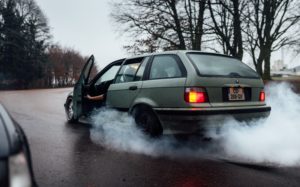Driving is something that you should always approach with a certain level of precaution, which is doubly true when you attempt to drive in poor weather. Taking the right precautions can help you mitigate the risk of getting into an accident.
How to Account for Bad Weather When Driving
Whether you’re driving on wet roads or attempting to navigate deep-set fog, bad weather will invariably heighten your risk of getting into an accident. Around 418,000 people are injured each year in accidents that are caused by bad weather. If you follow certain driving tips and guidelines, you should be able to lower your risk of getting into an accident because of poor weather conditions.
Standard Driving Tips for Poor Road Conditions
When the wind is blowing and the rain is pouring, it’s very difficult to enjoy driving, which is likely a good thing since you’ll want to focus on getting to where you’re going safely. No matter what kind of poor weather conditions you’re dealing with, it’s essential that your headlights are turned on. Any issues with visibility will make it more difficult for you to see other vehicles and for other vehicles to see you if your headlights aren’t turned on. In bad weather, it’s recommended that you keep two car lengths between your vehicle and the next vehicle.
You should also make sure to always drive slowly during poor weather. Since your tires will have worse traction, you’ll want to be able to come to a complete stop without much issue if necessary. Whenever you approach an intersection, slow down and approach with caution even if the light is green. Your vehicle should also be in good condition before you head out, which means that your battery should be in good shape, your windshield wipers should be working properly and your tires should have enough tread to them.
How to React on Rainy Roads
The worse time to drive on a wet road is right after it has started raining. The initial arrival of rain will have kicked up oily substances and other fluids that were previously embedded on the road. In the immediate aftermath of these substances being brought to the surface, you’ll have a much higher chance of hydroplaning. If this ever occurs, make sure that you avoid slamming on your brakes. Instead, keep a strong grip on your steering wheel while you take your foot off the accelerator. The vehicle will then coast and should eventually gain traction again. To lessen the risk of hydroplaning, some of the precautions you should take include:
-
- Making sure that your tires have a high amount of tread and are inflated to proper levels
-
- Avoiding standing water whenever possible
-
- Slowing down around turns
-
- Letting the speed of the vehicle match the conditions
What to Do When There Is Poor Visibility
Even when it’s not raining or snowing, there are some weather conditions that can reduce your visibility while driving, the primary of which include bright sunlight and thick fog. To reduce problems caused by intense sunlight, you should always have a pair of polarized sunglasses at the ready. The pop-down visor in front of you should also be used if the sun is reducing your visibility. As for fog, make sure that you keep your speed down since you won’t be able to see brake lights until you’re very close to a vehicle. If your vehicle is equipped with fog lights, don’t hesitate to use them.
What to Do When Involved in an Accident
No matter what precautions you take when driving, you can’t predict how someone else is going to drive, which makes it possible that you will get into an accident if the other driver is at fault. In the event that you’ve been injured as a result of the accident, you will have several legal options at your disposal, the primary of which include filing an insurance claim or filing a personal injury lawsuit. If you wish to file a lawsuit, our Allentown accident attorney can guide you through this extensive process. From filing the necessary paperwork to building a strong defense, we’ll assist you through every step of your case.
When you’re exploring your legal options for the injuries you’ve sustained in a car accident, contact our Allentown accident attorney at our Lehigh Valley office at (610) 435-7400 to determine if filing a lawsuit is right for you.




Speak Your Mind